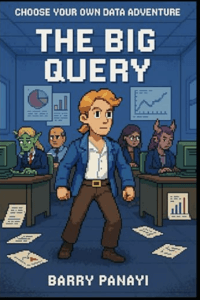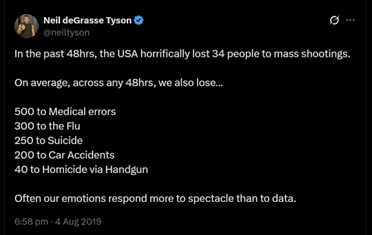I’m not going to start by talking about data at all.
I want us to forget data for a minute and think about animated films, the fun they bring and the memories they leave us with as children and adults.
Steve Jobs was being interviewed back in the 90s about Pixar (and Toy Story – the first fully computer animated feature film) and was asked about the technology and how it was revolutionising film making.
And while the technology itself was pioneering – it took them 10 years to build, and they were the first to develop it – he was adamant about bringing it back to the people and mission.

There are 3 quotes that really stood out for me:
“We don’t see ourselves as a technology firm. We’re a content company. All the technology is in service of the storytelling.”
“We’re about putting stories into the culture”
“We’re not a quarter-to-quarter earnings company. We’re building assets that are annuities into the future”
Creating compelling, relevant stories that hook the audience
What Jobs described I think this is true for Data and a lot of other ‘service’ functions too.
How many times have we poured over raw data, had teams analysing what’s happened or what we think might happen, only for it to fall flat when presented to a colleague on the ‘business-side’ (non-data team in this case).
“So what?” might be the response…
And an opportunity missed.
All that hard work swatted aside.
Dejection, frustration might creep in…
Why? Because of a communication failure. A miss when it came to grabbing the attention of our audience.
All of the brilliant technical and domain capability that underpins what is being communicated is of course vital. Without it we’d have no stories to tell…
…But ultimately it’s value is about creating an accurate and compelling communication of the story of where we’ve been, where we are, where we’re going, and how we can influence that future for the better.
Data functions should be the authors of organisational literature; the producers of engaging, informative content.
More so than almost any other function in a business, Data teams are the custodians of business narratives.
They help collect, collate, structure, govern and make available all the information that organisations can then draw upon to make decisions.
But how do we get that information from incomprehensible raw data into something that inspires action?
By bringing it to life.

Great Data teams & leaders work really similarly to great authors & producers:
- Ensure that there’s a common language so everyone understands the same messages in the story
- Make sure that the story being told is accurate and relatable to the audience.
- Build storylines to help people engage with concepts and relate to characters.
- Work with all of the other functions to bring multiple storylines into one production.
The technology and technical domain expertise is all in service to the storytelling.
As Jobs said in that same interview – “Stories live for a lot longer than any of the technologies used to create and communicate them”.
Unless we want the insights and value uncovered to be lost as quickly as a slide changes or screen turns off, we must create stories that outlast the delivery method. Meaningful narratives that stay with people long after they shut their laptop.
The sooner we can identify the issues in the business that the people we need to work with care about, the sooner we can create engaging content and storylines that create meaningful connection with that audience.
Is it just Pixar who have put storytelling first?
In short, no.
There’s a wealth of books, videos & articles out there documenting how great storytelling builds deeper connection and purpose, buy-in to change and embeds things in our memories far better. Google it, there’s loads.
However a few fun examples you may not have come across yet that you can check out for yourself are below:
Barry Panayi’s ‘Choose Your Own Data Adventure’ book – The Big Query.
- Barry chose to throw out conventional approaches to delivering Operating Model content. Instead he created an interactive adventure for people to experience.
- Not only did he create a story, he allowed the audience to be part of that story and engage with the content in a way that made them feel part of it.
- The feedback was overwhelmingly positive and prompted multiple requests for follow ups and future editions in the series.
You can find the book on Amazon if you want to discover for yourself. The Big Query: Choose your own data adventure: Amazon.co.uk: Panayi, Barry: 9798316740734: Books

The Significant Objects experiment.
- In 2009 two journalists, Rob Walker and Joshua Glenn, conducted an experiment in storytelling.
- They bought 100 random items for a total of around $130, added purpose-written (completely imagined) short stories from contributing writers, to the item descriptions, and sold them for nearly $8,000 total.
- The stories transformed items that were worth almost nothing, into pieces worth significantly more to the right audience.
Read more on the project here: Significant Objects, and the Magic of Storytelling | by Emily Ross | Medium
Neil deGrasse Tyson’s simple but effective use of statistics to highlight emotional response.
A quick one to include to highlight the impact you can achieve from just a short data-led story…

How do I build a compelling story?
You have to start with understanding your audience and what matters to them.
Then you can build a narrative that will more naturally appeal.
For example; Dark Waters – starring Mark Ruffalo and telling the emotional and compelling story of how petrochemical manufacturers polluted the entire world with ‘forever chemicals’ – is a compelling and moving story to an adult. (and one that made me change my kitchen pans very quickly!)
But to a child, it is completely irrelevant. But Toy Story will likely have their full attention!
Gartner breaks Data Storytelling down into 5 areas:
- Visualisation
- Narrative
- Context
- Emotional Triggers
- Decision Options
I would argue that we should adjust this order to:
- Context
- Narrative
- Emotional Triggers
- Visualisation
- Decision Options
- By understanding the context first, we can then build a relevant narrative.
- Included in that narrative we can build the emotional triggers that will ‘hook’ the audience and ensure they don’t forget the story once they leave the room.
- When we understand these elements, we can then choose the right visualisations to articulate and bring the story to life.
- Once delivered, we can present the decision options to an audience who has been on the journey with us and understands the challenge as we do.

Lastly – have fun with it!
Create characters, use different points of view, add some humour, create an allegory, add a plot twist.
Make it engaging. And think about who you want to present it. Delivery will make a difference!
So… Start with the story!
In a world so increasingly controlled by the ever-growing plethora of new and exciting technology options available, I implore us all to take a step back and think of the storytelling first.
As Pixar did 30 years ago, please do use incredible technology to bring your stories to life… But start with the storytelling. That’s where the magic happens.

Lawrence Hill
Consultant - Data Strategist, Ortecha
contentS
- Introduction
- Creating compelling, relevant stories that hook the audience
- Data functions should be the authors of organisational literature; the producers of engaging, informative content
- The technology and technical domain expertise is all in service to the storytelling
- Is it just Pixar who have put storytelling first?
- How do I build a compelling story?
TALK TO AN EXPERT
We’d love to to connect and find out more about your data strategy and challenges.

